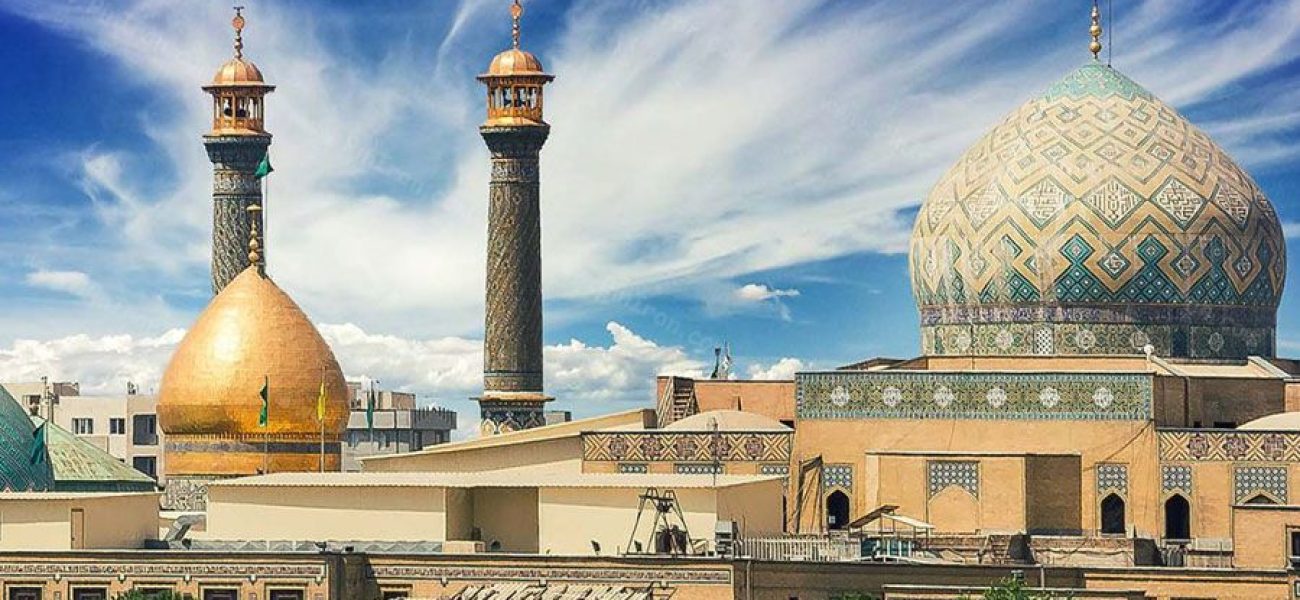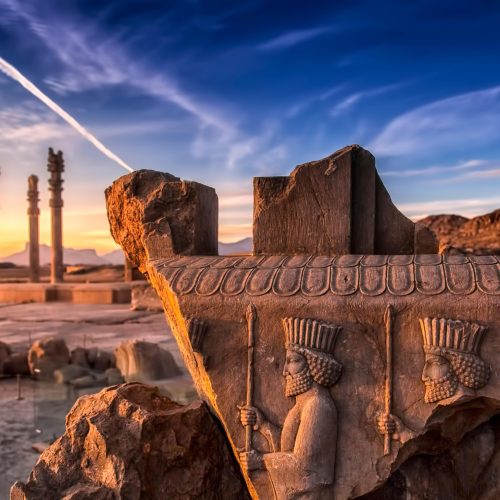The Shah Abdol-Azim Shrine, known as Shah Abdol-Azim al-Hasani in Persian (حرم شاه عبدالعظیم حسنی), stands as one of the most venerated religious and historical sites in Iran, and particularly within the sacred landscape of Ray, just south of the capital, Tehran. Serving as the resting place of the revered figure Abd al-Azim al-Hasani, a descendant of the Prophet Muhammad, the shrine has for centuries been a sanctuary for pilgrims seeking solace, healing, and connection with the divine. Its grandeur, rich history, and significant place within the spiritual consciousness of the Iranian people make it an essential landmark in the country’s Islamic and cultural heritage.
In this article, I explore the Shah Abdol-Azim Shrine’s background, historical evolution, architectural design, and the notable figures buried within its sanctified grounds. This discussion draws on Islamic historical traditions, the site’s long-standing relationship with Iran’s socio-political landscape, and the deep sense of piety that has guided the construction and expansion of this iconic shrine.
Background of Abd al-Azim al-Hasani
Before delving into the specifics of the shrine, it is important to understand the figure it commemorates—Abd al-Azim al-Hasani. Abd al-Azim was born in Medina in the early 9th century CE. He is widely recognized as a direct descendant of Imam Hasan, the beloved grandson of the Prophet Muhammad. As a pious scholar, Abd al-Azim dedicated his life to the cause of Islam, upholding the tenets of the Shia faith, and spreading the teachings of the Ahl al-Bayt (the Prophet’s family). During the tumultuous Abbasid era, his unwavering allegiance to the Shia Imams made him a significant target for persecution.
Abd al-Azim migrated to the ancient city of Ray (also known as Rey or Rhages) under the threat of Abbasid oppression. There, he lived under the protection of local followers of the Shia tradition, continuing to teach and propagate the principles of justice and morality espoused by the Imams. Ray, at the time, was a prominent center of Islamic learning and culture, and Abd al-Azim found refuge among its scholars and devout believers. His quiet yet significant life in Ray would soon transform the city into one of the most important centers of pilgrimage in Iran, a role it continues to play centuries after his death in the year 866 CE (252 AH).
Abd al-Azim’s Spiritual Legacy
Abd al-Azim al-Hasani’s contributions to Islamic scholarship, particularly within Shia jurisprudence, have earned him a permanent place in the religious memory of the Iranian people. His connection to the second Imam, Imam Hasan, and his loyalty to the line of the Shia Imams, gave him an esteemed spiritual status. In the view of Shia devotees, visiting the shrine of such a holy figure bears immense blessings. Pilgrims today consider their visit to Shah Abdol-Azim’s tomb akin to paying respects at the shrine of Imam Husayn in Karbala—a testament to his enduring spiritual authority.
In addition to being a figure of reverence, Abd al-Azim’s tomb has historically functioned as a symbolic site of resistance and perseverance. During centuries of upheaval, the shrine attracted not only pious pilgrims but also scholars and revolutionaries who sought solace and inspiration amidst political and religious adversity.
Historical Evolution of the Shrine
The evolution of the Shah Abdol-Azim Shrine is inseparable from the wider history of Ray. The city’s history spans millennia, with its importance dating back to ancient Persian empires. It was once one of the great cities of the world, famed for its learned scholars, prosperous trade routes, and cultural advancements. However, with the arrival of Islam, particularly following the rise of the Shia tradition, Ray’s significance became increasingly intertwined with Islamic scholarship and religious devotion. Abd al-Azim’s migration to Ray is a key chapter in this transformation.
The Shrine’s Early Development
Following Abd al-Azim’s death, his grave quickly became a focal point for pilgrimage. As is the case with many holy sites, the early stages of the shrine’s development were modest—a simple mausoleum marking the resting place of the saint. However, even in these early centuries, the site’s reputation as a place of immense spiritual power drew attention from both commoners and rulers.
The early years of shrine construction are not well documented, but it is known that during the Buyid dynasty (10th century CE), significant attention was paid to the upkeep and embellishment of the shrine. The Buyids, who were staunch supporters of the Shia tradition, played a key role in promoting the veneration of Shia figures and their resting places across Iran. Under their reign, the first serious efforts were made to create a formal sanctuary around Abd al-Azim’s tomb.
Safavid and Qajar Patronage
It was during the Safavid dynasty (1501–1736 CE) that the shrine of Shah Abdol-Azim experienced some of its most substantial architectural expansions. The Safavids, being devout Shia rulers, recognized the importance of such religious sites in legitimizing their rule. As a result, they invested heavily in the construction of mausoleums, mosques, and madrasas associated with the Ahl al-Bayt. Under the Safavids, the shrine was richly adorned with beautiful tile work, ornate inscriptions, and other embellishments characteristic of Persian-Islamic art.
However, it was during the Qajar period (1789–1925 CE) that the shrine took on much of its present form. The Qajar monarchs were instrumental in both preserving and expanding this sacred site. They endowed the shrine with substantial architectural additions, including gold-plated domes, decorative iwans (vaulted halls), and minarets. Fath-Ali Shah Qajar in particular, known for his deep religiosity and interest in Shia shrines, commissioned large-scale renovations, ensuring the shrine’s enduring splendor. These developments established the shrine as not only a place of spiritual significance but also an architectural masterpiece of Persian-Islamic art.
The Qajar dynasty’s devotion to Abd al-Azim was profound, as reflected in their frequent pilgrimages to the shrine, which often doubled as political gestures aimed at reinforcing their ties with the Shia clergy and the Iranian populace.
The Shrine in the Modern Era
The shrine’s continued prominence was further cemented during the Pahlavi era (1925–1979), although the secularizing policies of the regime resulted in a period of relative neglect. Nevertheless, the shrine continued to function as an essential site for pilgrims, scholars, and visitors alike. The Shah Abdol-Azim Shrine, with its glittering domes and soaring minarets, survived the political transitions of the 20th century, emerging intact as an essential site for religious devotion following the Islamic Revolution of 1979.
Today, the shrine is managed by the Endowment Organization of Iran and receives millions of pilgrims each year. Its religious, historical, and architectural significance has made it one of the most important pilgrimage destinations in the country, alongside the shrines of Imam Reza in Mashhad and Fatima Masumeh in Qom.
Architectural Design and Features of the Shrine
The Shah Abdol-Azim Shrine stands as a testament to centuries of Persian architectural mastery and Islamic devotion. The shrine complex includes a variety of spaces for religious practice, contemplation, and scholarly study, making it not only a place of worship but also a cultural and intellectual center. It is distinguished by its grand domes, intricate tilework, and artistic calligraphy, all of which reflect Iran’s rich Islamic artistic traditions.
The Main Sanctuary and Dome
The focal point of the shrine is the main sanctuary, where Abd al-Azim al-Hasani is entombed. The sanctuary is topped by a large, radiant dome, which has undergone several renovations over the centuries. During the Qajar period, the dome was gilded, giving it the characteristic shimmer that dominates the skyline of Ray. The golden dome, a symbol of divine light in Islamic tradition, radiates a celestial aura, inviting pilgrims from far and wide to seek its blessings.
Within the sanctuary, the tomb of Shah Abdol-Azim is placed under an intricately designed zarih (an enclosure made of silver and gold). The zarih is adorned with Qur’anic verses and exquisite calligraphy, inviting devotees to pray and reflect upon the teachings of the Prophet and his family.
The Iwans and Courtyards
Surrounding the main sanctuary are a series of grand iwans (large vaulted entrances), which serve as entry points into the shrine’s central courtyard. These iwans, a hallmark of Persian-Islamic architecture, are adorned with colorful tiles featuring floral patterns and verses from the Qur’an. Each iwan is designed to evoke a sense of spiritual grandeur, symbolizing the transition from the earthly realm into a sacred space.
The courtyard itself is a place of gathering for pilgrims, who often sit in quiet reflection or engage in communal prayer. Its spaciousness allows for the flow of large numbers of visitors, particularly during special religious occasions such as Muharram or the martyrdom anniversaries of the Shia Imams.
The Minarets
The shrine’s minarets stand as proud sentinels over the complex, soaring into the sky as beacons of faith. These minarets, constructed during the Safavid and Qajar eras, are adorned with blue and turquoise tiles, colors traditionally associated with Islamic spirituality and divine wisdom. Their architectural design blends both Persian and Islamic elements, showcasing the synthesis of form and function in Iranian religious structures.
The minarets, besides serving their practical purpose of calling the faithful to prayer, symbolize the constant presence of the divine in the lives of those who enter the shrine’s hallowed grounds.
Tilework and Calligraphy
One of the most captivating features of the Shah Abdol-Azim Shrine is its tilework and calligraphy. The walls, iwans, and inner sanctum are embellished with intricate mosaics of geometric patterns, floral designs, and arabesques. These tiles, predominantly in shades of blue, green, and white, are characteristic of Persian religious architecture. The calligraphy inscribed upon them, often verses from the Qur’an or sayings of the Prophet Muhammad and the Imams, serves as both decoration and spiritual instruction. Each verse invites contemplation, reinforcing the sacred nature of the space.
Notable Burials Within the Shrine Complex
The Shah Abdol-Azim Shrine is not only the resting place of Abd al-Azim al-Hasani but also serves as a burial ground for numerous prominent figures in Iranian history, politics, and religion. Among the many buried within its grounds are revered religious scholars, political leaders, and members of Iran’s royal dynasties.
Imamzadeh Hamzeh and Imamzadeh Taher
Adjacent to Abd al-Azim’s tomb are the graves of two other significant figures: Imamzadeh Hamzeh and Imamzadeh Taher. Both of these men, descendants of the Shia Imams, are considered saints in their own right. Imamzadeh Hamzeh is believed to be the son of the Seventh Imam, Imam Musa al-Kadhim, while Imamzadeh Taher’s lineage connects him to Imam Zayn al-Abidin, the fourth Shia Imam. Pilgrims who visit the shrine often seek the intercession of these holy figures alongside that of Shah Abdol-Azim, reinforcing the site’s multifaceted spiritual importance.
Political and Royal Burials
In addition to its religious significance, the shrine has historically functioned as a burial ground for political and royal figures. Members of the Qajar dynasty, particularly those with deep religious ties, are buried within the complex. One such figure is Nasir al-Din Shah Qajar, who is believed to have chosen this site for his final resting place due to his reverence for Abd al-Azim. His mausoleum within the shrine complex stands as a symbol of the enduring connection between the Qajar rulers and the religious foundations of the state.
Modern Martyrs and Intellectuals
In more recent history, the shrine has also become the resting place of modern martyrs and notable Iranian intellectuals. This reflects the shrine’s ongoing importance as a symbol of religious resistance and intellectual struggle. During the Islamic Revolution and the Iran-Iraq War, many of those who lost their lives in the fight for the Islamic Republic were laid to rest here, further cementing the shrine’s place as a repository of both spiritual and political memory.
A Sanctuary of Faith and History
The Shah Abdol-Azim Shrine is not merely a religious monument; it is a living testament to Iran’s deep spiritual roots, its complex history, and its enduring reverence for the Ahl al-Bayt. Over the centuries, the shrine has transformed from a humble mausoleum into a grand complex, representing the confluence of religious devotion, architectural brilliance, and historical significance. Each visit to the shrine serves as a reminder of the profound spiritual connection between the Iranian people and their faith, a connection that stretches back to the earliest days of Islam and continues to shape the cultural and religious landscape of Iran today.
As pilgrims walk through its iwans, stand beneath its golden dome, or pray at the graves of its saints and martyrs, they participate in a centuries-old tradition of seeking divine grace, wisdom, and solace—an act of faith that transcends time and politics, uniting all who come under the radiant banner of Shah Abdol-Azim al-Hasani.




